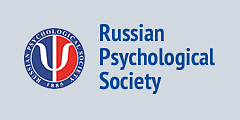Psychology in Russia: State of the Art, Moscow: Russian Psychological Society, Lomonosov Moscow State University, 2021, 1

2021
Volume 14 (01)
Volume 14 (01)
Clinical psychology
-
Fixed Forms of Behavior as Excessively Rigid Behavior in Normal and Pathological Individual and Group Systems
-
The Validity and Reliability of the Turkish Scale for the Assessment of Fatigue in Pediatric Oncology Patients Aged 7-18 s in RussiaPDF HTML3954“ CITE
Deviaterikova, A.A., Kasatkin, V.V., Velichovsky, B.B. (2021). The Validity and Reliability of the Turkish Scale for the Assessment of Fatigue in Pediatric Oncology Patients Aged 7-18 s in Russia. Psychology in Russia: State of the Art, 14(1), 39-48. DOI: 10.11621/pir.2021.0104
copied
Organizational psychology
-
Psychological Burnout among Professionals Working with Children with Motor Disabilities









